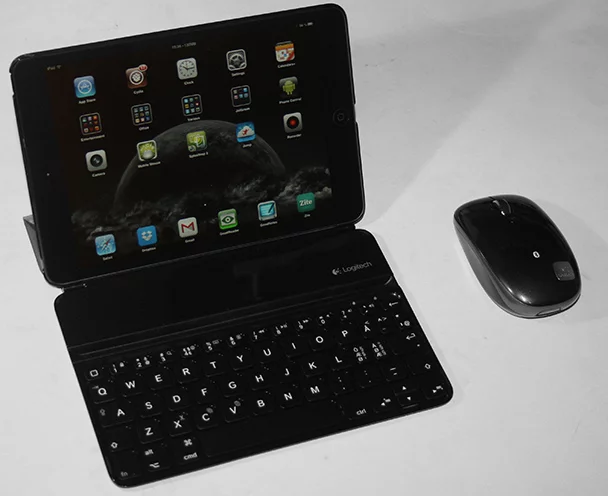The advantages of a remote PC setup over a native Windows environment

As you may know, I don’t use a laptop. I use a jailbroken iPad mini, Logitech Ultrathin Keyboard Cover, a Logitech m555b Bluetooth mouse, and Jump Desktop– a RDP/VNC app that happens to support the jailbreak tweak that allows the iPad to use a mouse. My main reason for this setup is that it gives me both iOS and Windows in a package that fits in a tiny bag, weighs less than some laptop chargers, and runs for 10 hours on a charge. I have however found that there are other advantages to using a remote PC setup than just the hardware.
Before I continue though, let me clarify that I’m not saying that a remote PC setup is necessarily better than a native Windows environment. It has a lot of disadvantages as well, and at the end of the day it’s up to each individual to decide which solution is best. All I’m saying is that disadvantages aside, there are still advantages to this kind of setup, other than just the portable hardware being smaller, lighter, and more battery efficient.
So, with that out of the way, on to the advantages of a remote PC setup. First off, remote controlling a PC means that you can run more powerful hardware in the other end than what would be possible to have as a portable setup. By going the remote PC way, I can focus on using a desktop computer at home, and even an older desktop computer will beat all but the most powerful of portable setups in terms of performance. This results in some very weird situations where you might for instance be doing video editing, and end up having a far smoother experience by remote controlling the computer that runs the actual software, rather than running it natively- all because connection lag is nothing like trying to do heavy tasks on devices that don’t have the power to do them.
Another issue that also has to do with doing heavy tasks is what happens to the device you have with you while an automated task runs in the background. If you were to initiate any sort of rendering, bulk conversions, OCR, or any other similar type of task on your local machine, it would become very slow and annoying to deal with while that task was running. If you use a remote PC setup, however, you can just log out, use your device, and log back in when the task is done.
Another advantage I’ve found has to do with how a lot of people have several devices, without them necessarily being synced. If you have one machine you use at home and one on the go, there’s an above average chance that you don’t have every single app, every singe file with you on your portable machine. With a remote PC setup, they’re essentially one and the same, and you don’t have this issue. I’ve found myself logging into my computer for all kinds of weird reasons, from checking on IM services that I can no longer be bothered running on mobile devices (since they can’t behave properly with several devices signed in), to grabbing files, to simply checking the logs for apps I only use there.
Then you have the matter of connection speeds. I have a 100/100Mbit connection at home, and as such, the connection I have more or less anywhere else is much slower. As such, it sometimes makes more sense to use my slower connection to remote control a device with a faster connection, rather than doing things directly. It’s an odd situation, but it’s useful for many things- like sharing files that you first have to upload, or just checking something right in the middle of a huge file (PDF, video, whatever).
Finally, startup. An Android/iOS device will very often be able to wake up and log into a remote computer much faster than a mobile device can wake up from sleep, let alone boot. What’s more, you’ll find the computer as you left it when you do so, ready to go straight away. Any processes that were running will still be running, so if you want, you can start something, pack up, go home, and find the computer still working away when you get there.
Like I said though, there are disadvantages to a remote PC setup. Connection lag, limited accessory support, the need for a fast connection to transfer files, double the chance of internet and power outages, and so on and so forth. Still, I feel that these two methods of having access to a full blown OS on the go are both valid methods, and that is why it surprises me how few people go the remote PC route. At the end of the day, there’s something quite ironic about sitting there with a 9-inch iPad mini, outperforming a 17-inch laptop on Windows tasks, all the while weighing less than its power adapter, and lasting four times longer on the battery.
That was my situation yesterday.


